There are a lot of unique features of the canopy or ‘”soft wing” sports. One of the most striking is how many models are built and flown as foot-launch aircraft. In fact, on a worldwide basis, it is likely that there are more foot-launch aircraft flying under canopy than there are wheeled ships. The reasons are many, and understanding them may help you decide which version of paraflight is best for you.
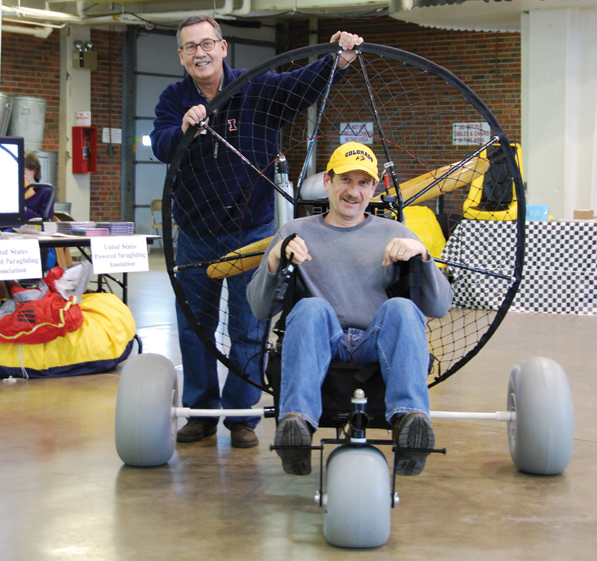
Jeff Steinkamp shows a pilot how a powered paraglider mounted on a trike feels at the Illinois Ultralight and Light Plane Safety Seminar.
It helps to appreciate the different histories of the canopy sports. Both have their roots in lifting kites. Soon after inflatable airfoils were invented, they were considered for powered flight. The first powered parachute was a converted gyroplane airframe that had its rotor replaced by a lifting parachute. In fact, the first several aircraft were wheeled powered parachutes. It was natural to start with wheels because the parachutes were inefficient, and the engines required to push them into the air had to have respectable power; with that power comes weight. Those weren’t engines that a normal person would be able to carry on a takeoff run!
Shortly after the wings began development on powered parachutes. Skydivers got ahold of them, and this eventually changed the entire skydiving industry. Skydivers were then able to fly steerable, flareable parachutes that actually created lift instead of just drag to slow their descents. Skydiving really began to drive the technology on parawing design because so many more people participate in that sport.
It was inevitable that someone would take one of the wings and try gliding off of a mountain with it. Those first quick descents motivated new designers to work on wings purpose-built for efficiency rather than for the shock-loading of skydiving.
The next step in the short history of the sport was similar to the history of fixed-wing and hang-glider style ultralights. Not everyone had a handy launch site, and creative inventors started building engines and propellers that pilots could carry during takeoff. The powered paragliding sport was born.
The last (and ironic) step in the process was the addition of wheels to the backpack power units for those who couldn’t or didn’t want to foot-launch anymore. But the wheeled carts with the lightweight engines and highly efficient wings ended up looking and behaving differently from the machines that grew up as the original powered parachutes. What we have today are foot-launch machines and an incredibly wide variety of wheel-launch models to choose from.
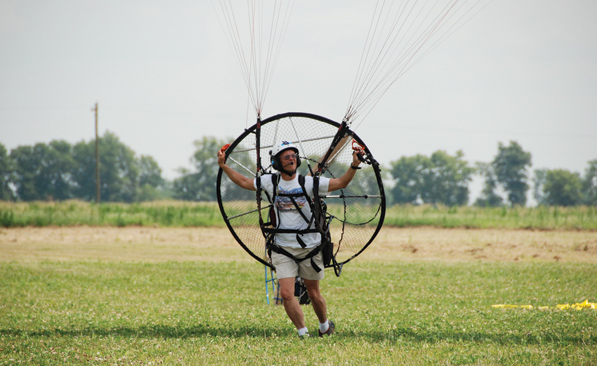
When launching, a powered paraglider pilot has to carry the weight of the paramotor.
Why Foot Launch?
With the evolution of both powered branches of paraflight ending up on wheels, you might wonder why anyone would want to foot-launch at all. Well, there actually end up being a number of advantages.
The first is price. It’s not just that wheels cost more. To have wheels, you need more airframe. With more airframe, the aircraft gets heavier. Soon you need a larger engine to push the whole assembly into the air, which adds even more weight. Airframes and larger powerplants end up costing more money. By keeping things simple, pilots are able to keep costs down.
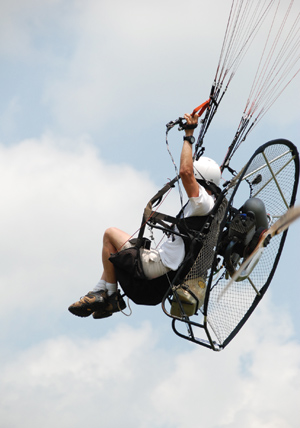
Once airborne, the powered paraglider pilot settles into a sling seat attached to the paramotor.
The size of foot-launch equipment also offers some nice advantages. For example, storing a powered paraglider can be accomplished in the trunk of your car if you can talk your spouse into it. Even if the car’s trunk is unavailable, the footprint of a powered paraglider’s power unit and bagged wing is minimal. Most pilots keep their aircraft at home and take it with them to the launch sites or airports when they want to fly. The compact aircraft is convenient, inexpensive to store, and allows pilots to easily travel on vacations or to fly-ins quite a distance away. Pilots store their powered paragliders in cars, vans, recreational vehicles, boats, and even in other airplanes. It’s hard to beat that kind of convenience. This has become particularly popular in Europe and Asia where people often don’t have a lot of storage space.
Next there is the maneuverability of the foot-launch equipment. The quality of flight improves with lower mass, because you aren’t fighting as much weight of the aircraft during maneuvers. If you ever get a chance to see powered paragliders compete in precision tasks, it is an amazing sight. I believe it is just a matter of time before you see stadium-style powered paragliding events. That is how tightly these types of machines are able to maneuver.
Accessibility to launch sites is easier with foot-launch equipment. Your chances of taking off from a city park, a baseball diamond or a public beach are much better if you are on foot rather than in a wheeled cart. There are laws against wheeled machines of any sort in many public areas. Most of the time those who wrote the laws haven’t considered aircraft that launch without the use of wheels. Well, mostly they haven’t considered aircraft at all, but not having a motorized cart helps a lot with the local law enforcement authorities if questions come up. Also, foot-launch aircraft usually need less runway than wheeled machines, and that opens up even more opportunities.
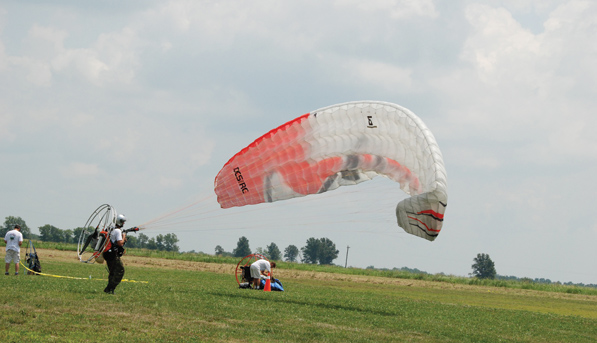
Kiting the more efficient elliptically shaped paragliders is a skill that requires practice.
Finally, for those who want whisper-quiet aircraft, electric foot-launch machines are on their way to the marketplace. These manufacturers are starting with foot-launch machines because less power is required to launch them and keep them flying.
Why Wheels?
While wheeled machines are a little larger and a little more expensive, they offer some advantages over their foot-launch brethren. The first is the physical fitness that you need to fly. Parawing flying is a little more physical than flying most other sport aircraft (although weight-shift control on a windy day can be a handful). After all, you not only have to preflight your aircraft, you also have to prepare the wing on the ground. Even with wheeled machines, some light lifting, carrying and bending are involved—certainly more than there is with an airplane. Even launching depends on being able to turn your head to observe the wing during kiting. These are not things we think about when we’re young, but they do become more important with age. Of course, wearing the paramotor on your back will require a bit more strength than rolling with it. But it isn’t like you have to carry it the whole time, or even through the entire launch. The wing is attached to the paramotor frame, and your seat is slung onto that frame. That means as soon as the wing begins lifting, the weight of the engine is transferred to the wing. In flight you are sitting in the airframe rather than carrying it. However, getting into the sky with the more efficient (and harder to launch) airfoils can become even more difficult when carrying a weight on your back.
The airfoils for foot-launch designs are generally more difficult to kite than those for wheeled launch. A big reason for that is efficiency. The wings that are built for foot launch are designed more for efficiency than they need to be for wheeled launch. That’s because designers know that the power available in the paramotors to push everything into the sky will be limited by the size of the engine a pilot is willing and able to lift and carry on his back. On the other hand, wings purpose-built for carts are designed more for their ability to kit up and center over the cart quickly and easily.
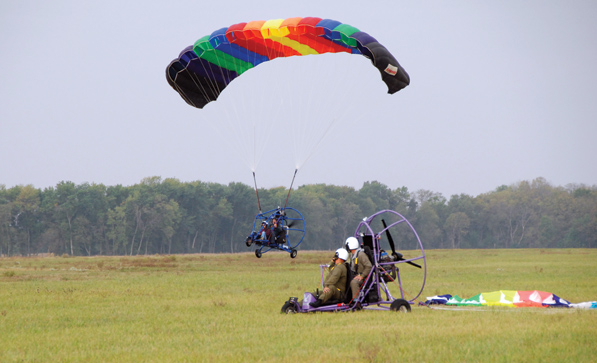
Taking somebody along for the flight is the biggest benefit of a two-seat powered
Finally, the best reason in the world for wheeled launch is the ability to take someone with you and share the flight. Powered parachutes come in both single- and two-place versions. It is easy to fly a two-seat machine with an empty back seat, but it is difficult to take someone with you in a single place. And while there are a few people foot-launching tandem machines, that kind of equipment is mostly used for training and is awkward at best. It requires coordination and ability from both the pilot and the passenger, and this is rare because it is difficult.
If you want to take along friends, family or even worthy strangers, a two-seat cart is your best bet. Of course, with that second seat comes a host of FAA pilot and aircraft requirements, as the ship is now considered a Light Sport Aircraft instead of an ultralight. But that is a discussion for another day.
Paraflight offers a lot of choices suited for a variety of pilots and flying goals. Figuring out whether you want wheels is a basic question to answer for yourself before pursuing the sport.

![]()
Roy Beisswenger is the technical editor for Powered Sport Flying magazine (www.psfmagazine.com) and host of the Powered Sport Flying Radio Show (www.psfradio.com). He is also a Light Sport repairman and gold seal flight instructor for Light Sport Aircraft as well as the United States delegate to CIMA, the committee of the Fédération Aéronautique Internationale (FAI) pertaining to microlight activity around the world.


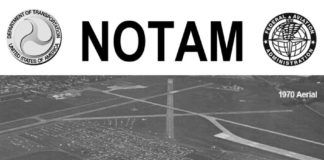
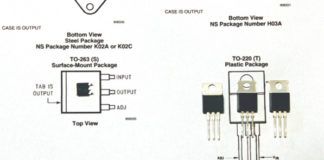
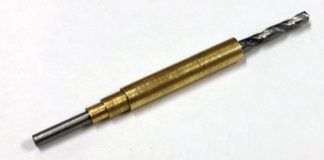
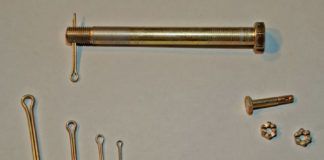
I retired at 57 this past x-mas and all ways wanted too fly. I am asking if there is any used machines out there and if so could you send me that way, thanks and hope to here from you soon.
Hi Donald! As with almost anything made, there are used versions available. The best thing to do is talk to your flight instructor about possible deals both new and used. I normally recommend learning to fly before you invest in equipment.